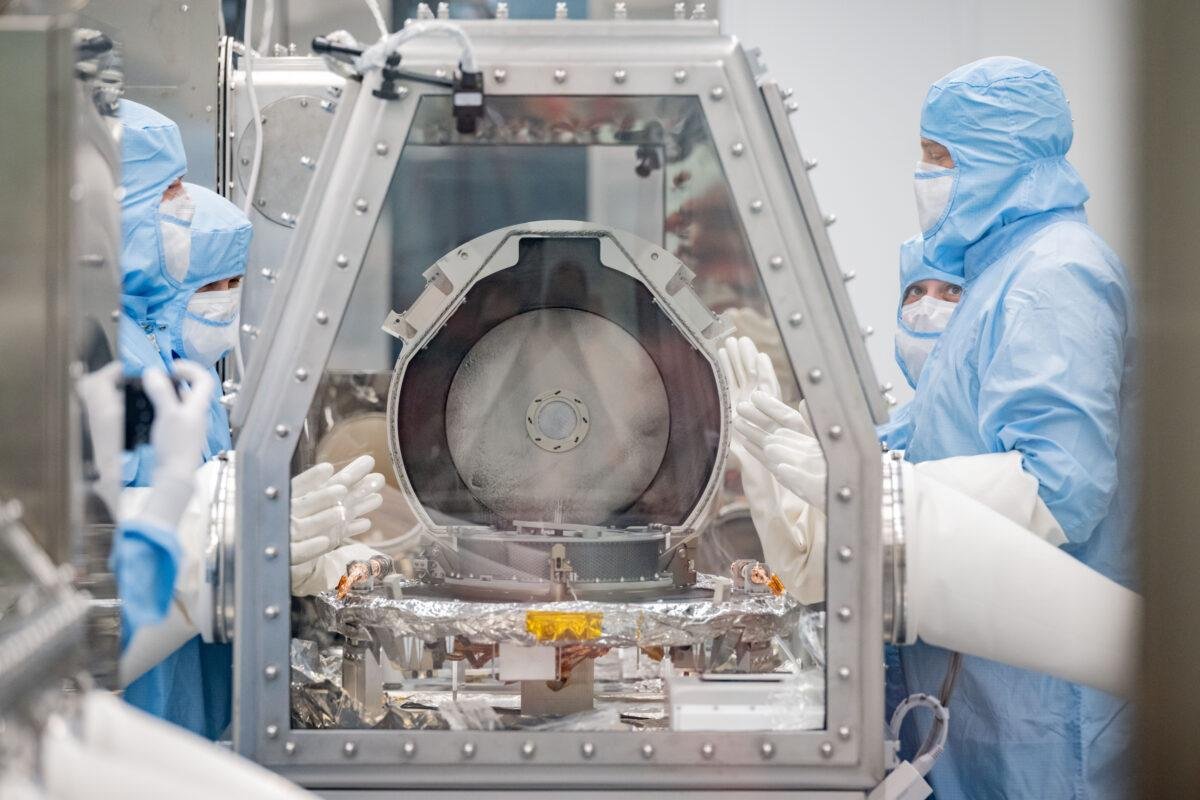As we begin curating the processing of material collected on the asteroid Bennu and brought back to Earth two weeks ago. NASA faces a challenge that will make work happen slower than expected. However, according to a post on the agency’s blog, there is a good reason for the delay: When the lid of the container brought by the OSIRIS-REx spacecraft was opened, its contents overflowed.
In fact, there was so much material that disassembling the Touch-and-Go Sample Collection Mechanism (TAGSAM) sampling head would have to be done in a more careful, organized and methodical manner than expected. Scientists noticed “leaking” particles when they collected material on Bennu three years ago, but they didn’t expect there to be so many.
Christopher Snead, deputy curation lead for OSIRIS-REx, confirms the glitch but says “the best ‘problem’ is:” There are so many materials that collecting them is taking longer than expected”. But this abundance of dust, including the outside of TAGSAM’s head, is considered “interesting in itself” and spectacular in its quantity.
How was material collected from asteroid Bennu?
TAGSAM is the OSIRIS REx extended robotic arm Collecting Bennu’s dust in a bowl on October 20, 2020. For the return trip, the instrument’s head was sealed inside the sample container that the spacecraft sent into Earth’s atmosphere last month before resuming its mission to another asteroid.
Once released, the largest portion of the sample still sealed in the container will be subjected to infrared measurements and X-ray diffraction, as well as analyzed by scanning electron microscopy (SEM), looking for: mainly hydrated minerals and organic-rich particles.
What does NASA hope to gain from samples of asteroid Bennu?
To contain the anxiety of scientists and the general public, The first sample collected outside the TAGSAM head was delivered to the avionics deckfor a quick analysis that could give insight into Bennu’s material and “what we might expect to find when the bulk sample emerges.”
The priority now is to move the TAGSM head to a dedicated “glove compartment”; This setup is normally used in research environments with some special features such as controlled atmosphere, working with gloves, protection against contamination, transportation of hazardous materials and research in extreme conditions. .
Although there is no information yet, since it is a detailed process, the expectation is that analysis of 250 grams of Bennu dust may reveal some of the basic principles of the small carbon-rich asteroid. It is hoped that this composition can reveal: Some important information about the birth of the Solar System.
Did you like the content? Tell us on our social networks and get the opportunity to share the article with your friends who love astronomy.
Source: Tec Mundo
I’m Blaine Morgan, an experienced journalist and writer with over 8 years of experience in the tech industry. My expertise lies in writing about technology news and trends, covering everything from cutting-edge gadgets to emerging software developments. I’ve written for several leading publications including Gadget Onus where I am an author.












